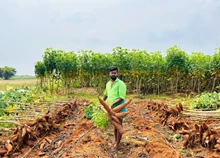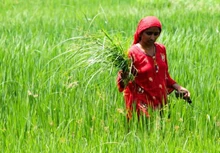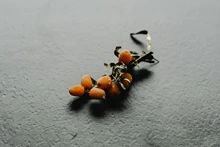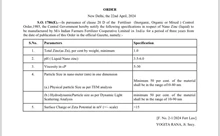
Experts from two Midlands universities are launching a new project to create a photonic 'nose' for monitoring crop pests and plant disease. Aston University is collaborating with Harper Adams University to research and develop light-based crop health monitoring technology. The findings were reported in the International Journal of Fruit Science.
Findings of Research:
Pests account for up to 40% of global crop production, according to the Food and Agriculture Organization of the United Nations. Plant diseases cost the global economy more than USD 220 billion per year, and invasive insects cost at least $70 billion.
Strawberries will be used in the Midlands research to put the new technology to the test. The fruit is worth Euro 350 million to the UK economy, but it is susceptible to potato aphid, which has the potential to wipe out an entire year's harvest.
Pesticides are currently used to treat crops, but there is increasing pressure to find alternatives due to the environmental impact. To create an early warning system, one method is to use integrated pest management (IPM). It monitors plants for insect and disease buildup rather than spraying them with chemicals, but it has so far proven unreliable and expensive.
The new project makes use of recent advances in photonics technology to analyze low levels of volatile organic compounds (VOCs) emitted by plants to determine their health. This, combined with machine learning hardware, makes the use of artificial intelligence in commercial settings feasible. Aston Institute of Photonic Technologies (AIPT) Professor David Webb believes that "better invertebrate pest and plant disease monitoring technologies will significantly help cut crop losses."
"However, most electronic noses use electrochemical sensors, which have issues with sensitivity, sensor drift/aging, and lack specificity." "We intend to address this by leveraging the rapidly evolving technology of photonics—the science of light—while collaborating with scientists from other fields."
The Biotechnology and Biological Sciences Research Council (BBSRC) and the Natural Environment Research Council (NERC) will each contribute £200,000 to the 12-month project. The grant is the maximum amount available from their molecules to landscapes project, which supports interdisciplinary solutions to real-world problems.
"With the projected increase in global population, there is increasing pressure on the agricultural sector to achieve higher crop yields," says Dr. Joe Roberts of Harper Adams University. Reducing crop losses within existing production systems will improve food security while consuming fewer resources."
"We intend to form an interdisciplinary community of agricultural science, optical sensing, and machine learning experts to create novel plant health monitoring platforms that improve agricultural production by detecting hotspots of pest and disease,” he added.
(Source: Aston University)











